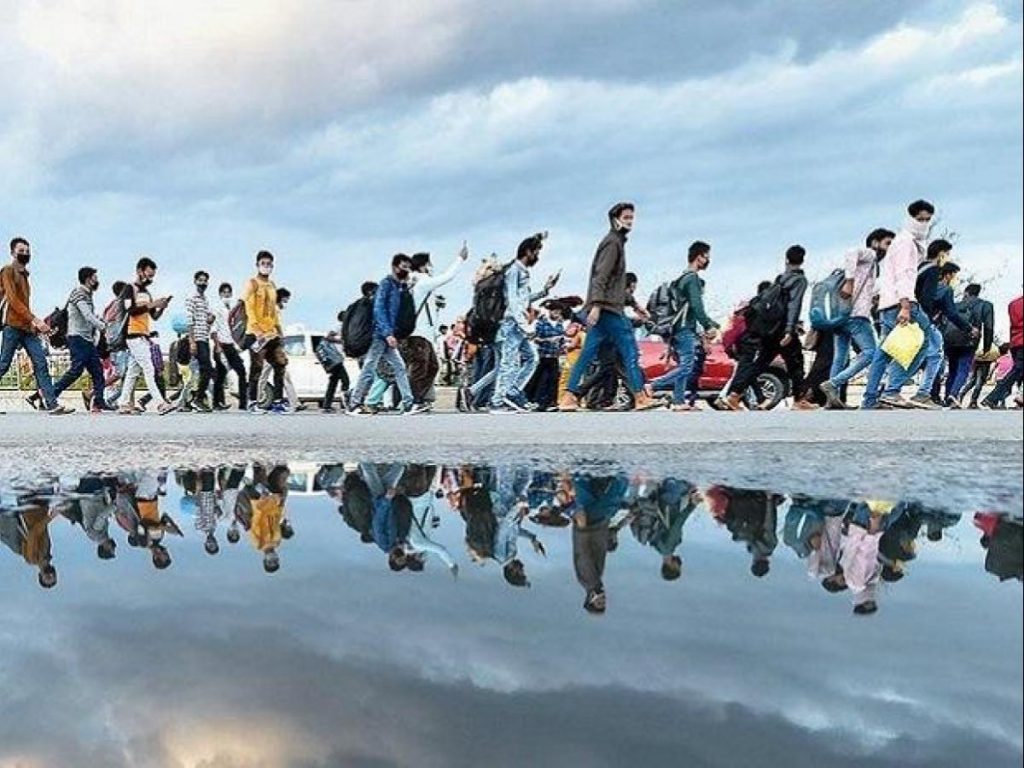Virendra Pandit
New Delhi: The first wave of Covid-19 pandemic, that swept India in 2020, may have doubled poverty and made at least 7.4 crore people poorer as a nationwide lockdown to contain the killer virus stripped them of their jobs and livelihoods, a leading US-based think tank said.
At present, India is battling a ferocious second wave infecting over 2 lakh each day—the Supreme Court, on Thursday, described it as a “national emergency-like situation”—and its impact on the economy is yet to be seen. There are conflicting reports of how the impact will pan out on the Indian economy in 2020-21: while the IMF and ace investor Rakesh Jhunjhunwala have projected double-digit growth in GDP in FY22, some global rating agencies have downgraded it and painted a grim picture.
According to a study conducted by Pew Research Centre, based on World Bank projections of economic growth, income levels in India dropped sharply for a large part of the population after the eight-month-long total or partial lockdown. The pandemic disrupted almost all industries in 2020, resulting in massive job losses across the formal and informal sectors of the economy.
Due to Covid-19, India witnessed one of the sharpest drops in the Gross Domestic Product growth rate among emerging economies. The poor bore the brunt of the economic contraction that India saw last year, Pew Research said.
As part of the study, it categorized income levels in India — up to USD 2 or less per day (poor), up to USD 10 per day (low income), up to USD 20 per day (middle income), up to USD 50 per day (upper middle income) and USD 50 or higher (high income).
It estimated that the number of poor people — with income less than USD 2 (Rs 150) or less in a day — increased from 6 crores to 13.4 crores—that is, 7.4 crore people became poorer.
As the economy plunged into a recession in 2020, India’s vast middle-class also shrank by 3.2 crores in numbers — from the pre-pandemic level of 9.9 crores to 6.6 crores in 2020.
The think tank also warned that the actual situation may be worse than estimated.
“If the Covid-19 recession has worsened inequality, the increase in the number of poor is likely greater than estimated in this analysis, and the decrease in the number who are high income is likely less than estimated. The middle class may have shrunk by more than projected,” it said.
For a nation that managed to cut poverty sharply from 2011 to 2019, the coronavirus pandemic in 2020 came as a rude shock. The pandemic hit India in 2020 when the country’s economy was already struggling, exports and income levels were falling.
The unemployment rate had also peaked in 2020 to its highest in over four decades. While there is no official data after 2011 to determine the country’s poor population, the United Nations in 2019 estimated it to be 36.4 crores or 28 percent of India’s population.
This estimate may also have jumped sharply during 2020, passing a large population of Indians into poverty.
To make matters worse, India is now facing a deadlier second wave of Covid-19. Its impact on the Indian economy could be worse than expected, according to a recent report by Nomura. Economists who authored it cited tighter curbs severely impacting businesses, especially smaller firms.
While economists had earlier expected the second wave to only upset economic growth in the near term, the situation changed rapidly with more states opting for a near-complete lockdown to prevent the rapid surge in Covid-19 cases. On Thursday, India reported over 3.14 lakh Covid-19 fresh infection cases and over 2,100 deaths in 24 hours.
As in the first wave, the second wave has also halted vibrant economic activity in key urban centers such as Maharashtra and Delhi-NCR. Many other states have also imposed localized partial or total lockdowns as the second wave kept surging since mid-March.
Restrictions on mobility multiplied losses for small businesses, which were still struggling to recover from the first wave’s impact. Several sectors such as aviation, tourism, retail, entertainment, and restaurants are again worried, fearing a recurrence of 2020 in 2021 as well. Indications came swiftly in Mumbai and Delhi which saw the migrant laborers returning home, once again.
Experts estimate that only by ramping up vaccinations containing the virus by the end-May can India resume a modicum of normal business activity, without which massive loss of jobs and income could hit the economy badly, and pushing more Indians into poverty.

